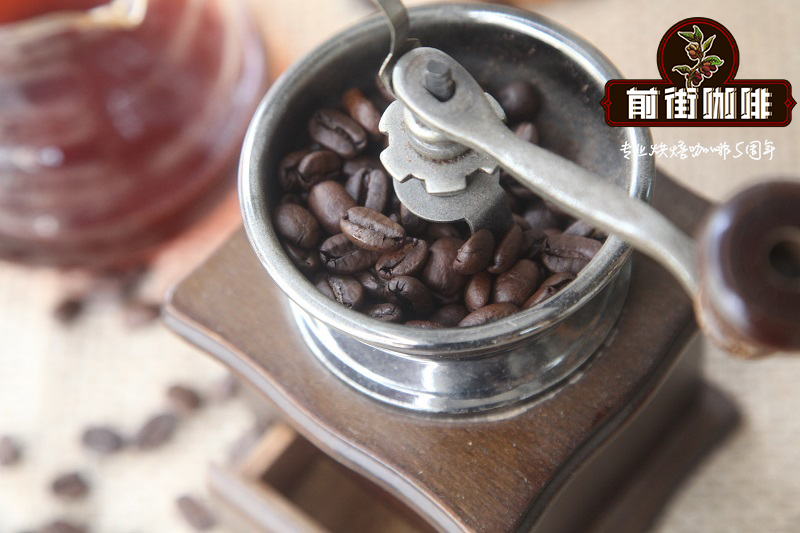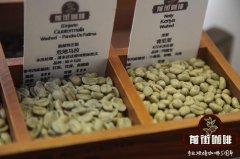Does coffee taste better when grown in an active volcano? How does active volcano coffee taste?

Around the world, volcanic soil is generally considered "more fertile" for crops, including coffee. But why?
800m people live within 100km of the world's 1400 active volcanoes, accounting for almost 10 per cent of the world's population. Active volcanoes, despite their destructive power, attract millions of tourists every year and provide geothermal energy that can be used to support local communities. In addition, volcanic material from volcanic eruptions may be mixed with the surrounding land, resulting in some of the world's most fertile crop soils.
In particular, coffee plants grow strongly in volcanic soil, which is characterized by a series of physical, chemical and mineral properties, which make it superior to other soil types in agriculture. But soil is only part of the story. The volcanic environment also provides other conditions for growing some of the world's most delicious coffee.
ANDISOLS: the power of volcanic soil
Most volcanic soils are formed by Tefara. Tephra is a mixture of volcanic eruptions (ash) and rock fragments that erupt from the volcano and fall to the ground during the eruption. Over time, pemphigus breaks down to produce so-called volcanic soil.
Most volcanic soils are called Andisols or Andosols, and they come from the Japanese words anshokudo and ando, meaning "dark soil". Andisols are light and fluffy; they contain a high proportion of silicate glass and tend to accumulate organic matter.
Andisols is excellent at planting roots for a number of reasons. First of all, they have low density and stable but porous structures. This can make the soil effectively retain moisture and make it relatively resistant to drought. Because the roots of plants are highly permeable, they can also grow deeply and drain easily, thus preventing the roots from becoming too wet and rotten.
Coffee plants need a variety of nutrients to grow and transport through the soil. Volcanic soils are fertile to some extent because they are relatively "young". They retain many of the nutrients found in the original rocks. Although there are differences between volcanoes, Ansol usually contains phosphorus, potassium, calcium, magnesium, zinc, iron and boron, all of which are important for the development of coffee plants.
For example, potassium levels affect the formation of coffee cherries and beans, but sugar levels and citric acid content also affect the flavor of coffee. Calcium is important for the development of roots and leaves and affects the rate of fruit ripening, while boron increases crop yield. Studies have also shown that plants growing in soils rich in phosphorus and potassium usually produce coffee with better aroma, flavor and acidity.
Eruption patterns and ANDISOLS
The fertility of volcanic soil and the growth of coffee cultivation depend on the chemical nature, nature and frequency of volcanic eruptions.
Eruptions can be divided into two types: eruptive eruptions and explosive eruptions. Explosive eruptions are mainly characterized by the gushing of lava, which produces Andisols rich in iron and magnesium. Explosive eruptions, on the other hand, are characterized by the eruption of volcanic ash and debris (or Tefera) rich in silica. It then covers the land around the volcano and produces Andisols, which is high in aluminum, sodium and potassium.
Most volcanic soils found around the world are formed after explosive eruptions. After eruptions, the Andes are rarely formed because the surface formed by lava flows can take thousands of years to decompose into soil.
Many Latin American countries that produce coffee (including Colombia, Ecuador and Guatemala) are located in a place known as the Pacific Ring of Fire, which contains more than 75% of the world's active and dormant volcanoes. These countries have many eruptive volcanoes, which produce Andean volcanoes.
Because most of these volcanoes erupt after a few decades to hundreds of years, the fresh Tiffra volcano intermittently falls on the surrounding soil. This protects the underlying Ansore monsters from physical erosion and weathering, thereby protecting them.
It also means adding fresh Tiffra regularly to provide constant nutrients to "replenish" the soil and maintain its fertility.

Volcanic Coffee: beyond the soil
In addition to the nutrient-rich soil produced by volcanoes, the topography of many volcanic areas provides other benefits for growing coffee. Arabica plants grow strongly at temperatures ranging from 1000 to 2000 Markov liters and from 18 to 21 °C.
Volcanoes are usually found along high-altitude mountain areas, such as volcanic arcs in Central and South America. In general, the higher the coffee temperature and the higher the altitude, the slower the growth of coffee beans and the slower the ripening rate of cherries.
The optimal growth angle of coffee plants is about 9 °, which is in the range of the lower slope (6 to 10 °) of most explosive volcanic eruptions. Mountainous volcanic terrain usually provides enough shadows to protect coffee plants from the scorching sun.
Although Ansol has been found around active and dormant volcanoes around the world, climate controls on the growth of coffee plants mean that their cultivation occurs mainly in the tropics around the equator, known as the "bean belt".
The region spans Central America, South America and the Caribbean, as well as parts of Africa, the Middle East and Asia. Many major coffee-producing countries have been found in the region (such as Colombia, Costa Rica, Ethiopia, Guatemala and Indonesia), which are strongly linked to volcanic activity.
Volcanic Challenge: growing Coffee in High-risk areas
It has been found that most of the Andisols used for farming is close to explosive volcanoes. The nature of these eruptions makes them inherently dangerous. In addition to volcanic ash clouds, explosive eruptions also produce hot gas and volcanic ash flows, called pyroclastic flows, while volcanic mud flows are called Lajas flows.
Pyroclastic flows and volcanic eruption zones can reach speeds of more than 80 kilometers per hour and can travel tens or even hundreds of kilometers. When volcanoes erupt, they will sweep past one side and destroy almost everything in their path in a few minutes.
Both hazards bring volcanic material to the surrounding areas, which will produce and maintain Andisols in a timely manner. But in the short term, they can destroy farmland and destroy entire towns.
Andisols encourages population growth near active volcanoes and previously unresolved volcanic areas. However, as more people settle or grow crops near the volcano, the risk of life and livelihood increases. This challenge will last forever.
Over the centuries, experience and research have highlighted the conditions that affect the growth of coffee plants. However, how each factor affects the taste of coffee is much more complicated. Small changes in local soil characteristics and environmental factors (wind and soil) may cause the characteristics of coffee to differ greatly from those of nearby farms. As our understanding grows, more research is needed to understand how volcanic substances affect the flavor of coffee.
So the next time you taste delicious coffee from a famous volcanic area, consider the natural forces that help produce its unique flavor. Think of the coffee farmers who work in these dangerous volcanic areas every day, which can provide a unique flavor for your morning brewing.
Important Notice :
前街咖啡 FrontStreet Coffee has moved to new addredd:
FrontStreet Coffee Address: 315,Donghua East Road,GuangZhou
Tel:020 38364473
- Prev

Chemex brewing eight-step instructions teach you to simply use Chemex to make a delicious cup of coffee
Fashionable dumping, so that users can fully control all aspects of brewing is also one of the most elegant brewing methods in the world. The favorite manual flip can produce delicious, clean coffee. What is Chemex? Chemex is a manual pouring device, which was invented in 1941 and is still popular today. Founded by Dr. Peter Schlumbohm, a German chemist, it uses real
- Next

You must know the knowledge of raw coffee beans what is the difference between the methods of handling raw beans
Where did the coffee come from? The common coffee beans are coffee beans that can be brewed into coffee after being processed and roasted. But many people may not know that coffee beans are the essence peeled off by layers of coffee fruit, that is, the seeds of coffee cherries (commonly known as coffee cherries because they look like cherries). The third from the right is the maturity that can be harvested. Oh, overcooked or overripe.
Related
- Beginners will see the "Coffee pull flower" guide!
- What is the difference between ice blog purified milk and ordinary milk coffee?
- Why is the Philippines the largest producer of crops in Liberia?
- For coffee extraction, should the fine powder be retained?
- How does extracted espresso fill pressed powder? How much strength does it take to press the powder?
- How to make jasmine cold extract coffee? Is the jasmine + latte good?
- Will this little toy really make the coffee taste better? How does Lily Drip affect coffee extraction?
- Will the action of slapping the filter cup also affect coffee extraction?
- What's the difference between powder-to-water ratio and powder-to-liquid ratio?
- What is the Ethiopian local species? What does it have to do with Heirloom native species?

